Hanoi, the capital of Vietnam, is a culinary paradise known for its vibrant street food scene and rich culinary traditions. From fragrant bowls of noodle soup to grilled delights and sweet treats, Hanoi's local dishes reflect the heart and soul of its culture. Each dish tells a story, often rooted in history, showcasing the city's diverse flavors and ingredients that combine to create harmonious and satisfying meals. Traveling through Hanoi is not just a feast for the eyes but a gastronomical journey that invites you to explore its fascinating food culture. With street vendors and bustling markets at every corner, the city offers endless options for food enthusiasts eager to experience the true taste of Vietnam. Whether you are a seasoned traveler or a first-time visitor, indulging in local dishes will enrich your understanding of Hanoi's culinary identity and offer a delightful way to connect with its people.
When exploring Hanoi, certain dishes stand out as quintessential representations of the local cuisine. These must-try signature dishes embody the essence of Vietnamese culinary techniques and flavors, showcasing fresh ingredients and traditional cooking methods. Among the most popular dishes are Phở, Bún Chả, and Chả Cá. Each of these dishes carries its unique story and preparation method, making them essential to any food lover's itinerary. These iconic dishes are not only delicious but also reflect Vietnam's rich history, showing how culinary practices have evolved over time while still adhering to time-honored traditions. As we dive deeper into these local favorites, we can appreciate the art of cooking in Hanoi and the dedication of each chef who brings their expertise to the table.
Phở is undoubtedly the king of Vietnamese cuisine, and in Hanoi, it reaches the pinnacle of perfection. This beloved noodle soup typically features either beef (phở bò) or chicken (phở gà), with a fragrant and aromatic broth that is a labor of love. The magic of phở lies in its broth, simmered for hours using beef bones or chicken carcasses, alongside star anise, cloves, ginger, and cinnamon to create that signature depth of flavor.
Dining on phở is more than just a meal; it's an experience that transports you to the heart of Vietnamese culture. The dish is served steaming hot, often accompanied by fresh herbs that diners can customize according to their preferences. The contrast between the rich, savory broth and the fresh, vibrant toppings creates a balance that is both comforting and invigorating.
Hanoi is home to some iconic phở spots, with Phở Gia Truyen Bat Dan and Phở Suong leading the charge. These establishments are revered not only for their delicious broth and textures but also for their commitment to using high-quality ingredients that are freshly sourced. Whether enjoyed for breakfast, lunch, or dinner, phở is always a good idea in Hanoi, truly representing a fundamental part of the local dining culture and the people’s warmth.
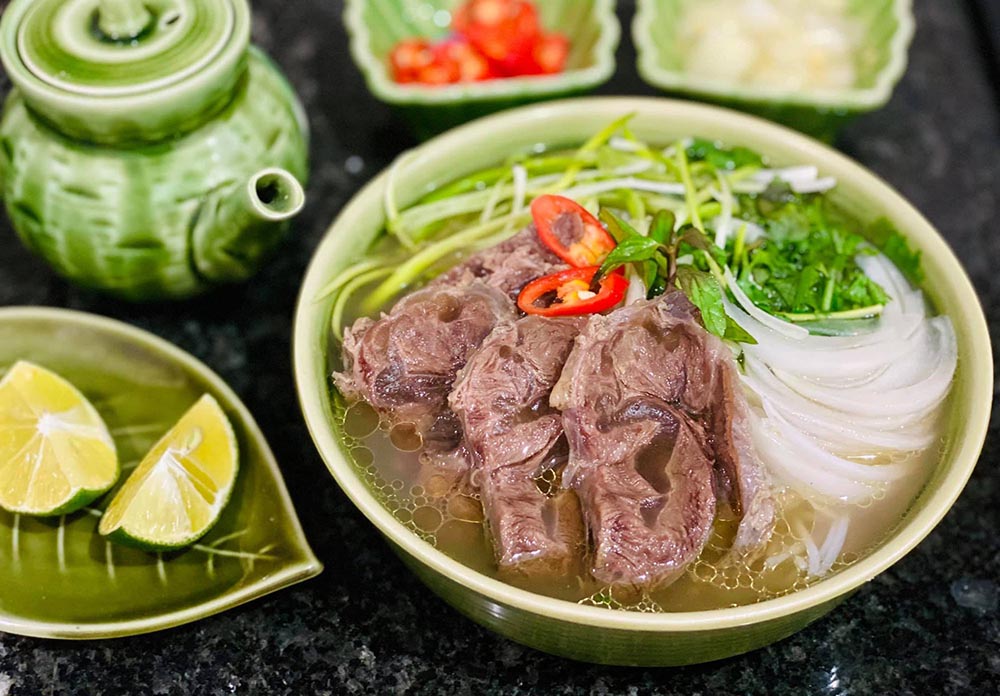
Another dish that defines Hanoi's culinary landscape is Bún Chả. This traditional Vietnamese dish showcases grilled pork served over a bed of rice vermicelli (bún), making for a delightful combination of flavors that dance on the palate. The dish is simplicity at its finest, showcasing perfect balance in taste and presentation.
The marriage of smoky grilled pork with delicate rice noodles creates a symphony of tastes that is tantalizing. Diners often personalize their bowls with fresh herbs like mint and cilantro, sliced cucumbers, or fried shallots for an added crunch. One cannot help but fall in love with the sweet, tangy sauce that you dip the meat and noodles into, enhancing every bite with a burst of flavor.
Renowned spots for Bún Chả include Hương Liên, which gained international fame when President Obama dined there with Anthony Bourdain. Such establishments have cemented the dish’s status in the global culinary scene, making it an essential stop for anyone wishing to savor the flavors of Hanoi.
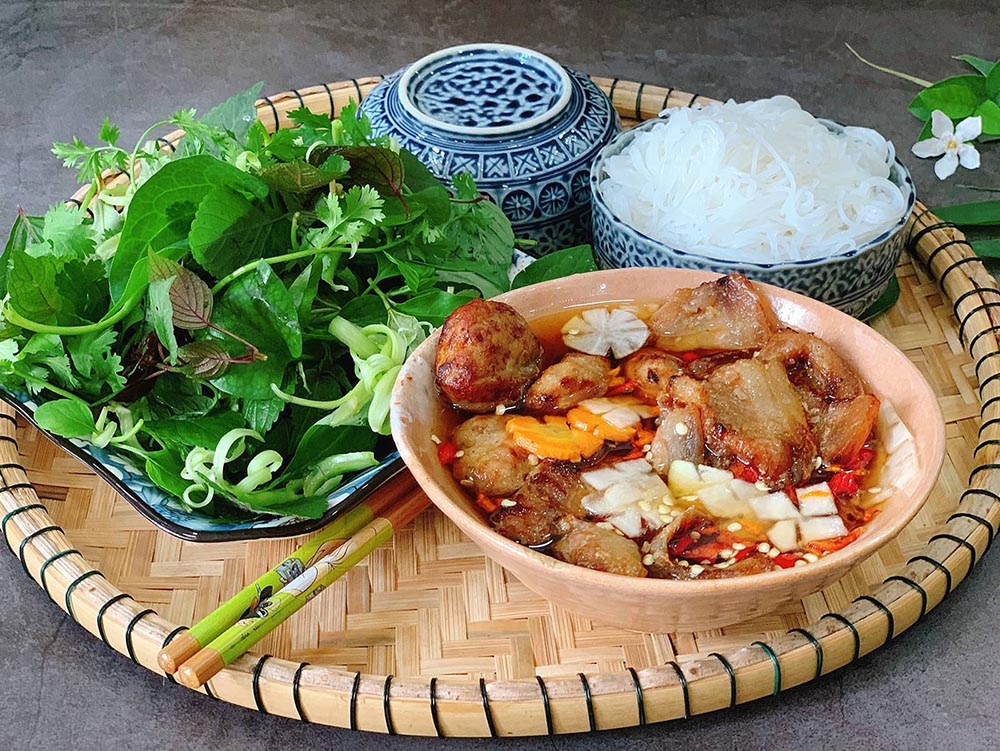
Chả Cá is another iconic dish that showcases the seafood bounties of Hanoi, bringing the user a sensory experience that is both aromatic and flavorful. Often associated with the historical neighborhood of Old Quarter, this dish features marinated fish, typically catfish, that is pan-fried with turmeric and fresh dill.
Served with a side of rice noodles and a variety of dipping sauces, Chả Cá engages every aspect of dining from preparation to presentation. When the dish arrives at your table, you are greeted by the excitement of sizzling fish, adding an interactive element as diners assemble their own bowls with noodles and herbs. The combination of fresh dill and turmeric creates not just an aromatic experience but also presents a visually striking dish that captivates the eye.
One of the most celebrated places to try Chả Cá in Hanoi is Chả Cá Lã Vọng, a restaurant steeped in history and authenticity. Here, the flavors of the fish, the freshness of the herbs, and the crunch of the peanuts come together, each contributing to a fantastical experience that encapsulates Vietnam's love for fresh, flavorful food.
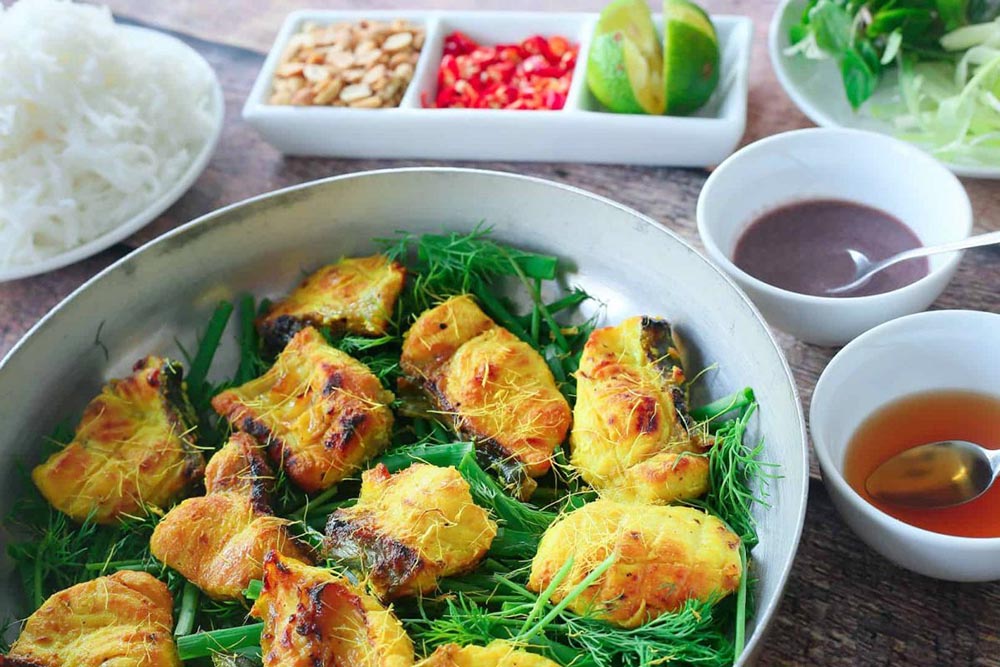
As you venture deeper into the vibrant food scene of Hanoi, discovering its unique dishes becomes essential. Beyond the more well-known dishes lies an array of flavorful options that showcase the region’s distinct tastes and local ingredients. Dishes like Bún Ốc, a snail rice vermicelli soup, Mì Xào Lươn, stir-fried eel noodles, and Bánh Cuốn, steamed rice rolls each tell a different story and excite the palate in delightful ways. These unique offerings further enhance Hanoi's reputation as a haven for adventurous eaters and food lovers alike, drawing people in with their diverse textures and tastes.
Bún Ốc, or snail rice vermicelli soup, is a culinary gem that exemplifies Hanoi's innovative approach to local ingredients. With its fragrant tomato-based broth and fresh water snails, this dish provides a refreshing yet hearty option that many diners thoroughly enjoy.
The rich broth, paired with tender rice vermicelli, envelops the snails, and together they create an unforgettable eating experience. The dish is particularly enjoyed during the summer months, with a cold version, Bún Ốc Nguội, becoming popular among locals looking to cool off. There’s a certain pride in enjoying Bún Ốc at street stalls or local eateries, where you can customize the flavors of your dish with lime wedges, chilies, and shrimp paste.
Among the best places for this dish are Bún Ốc Bà Lương and Bún Ốc Cô Thêm, which maintain authenticity through traditional preparation techniques and fresh ingredients, making them a favorite among both locals and tourists seeking an authentic bowl of Bún Ốc.
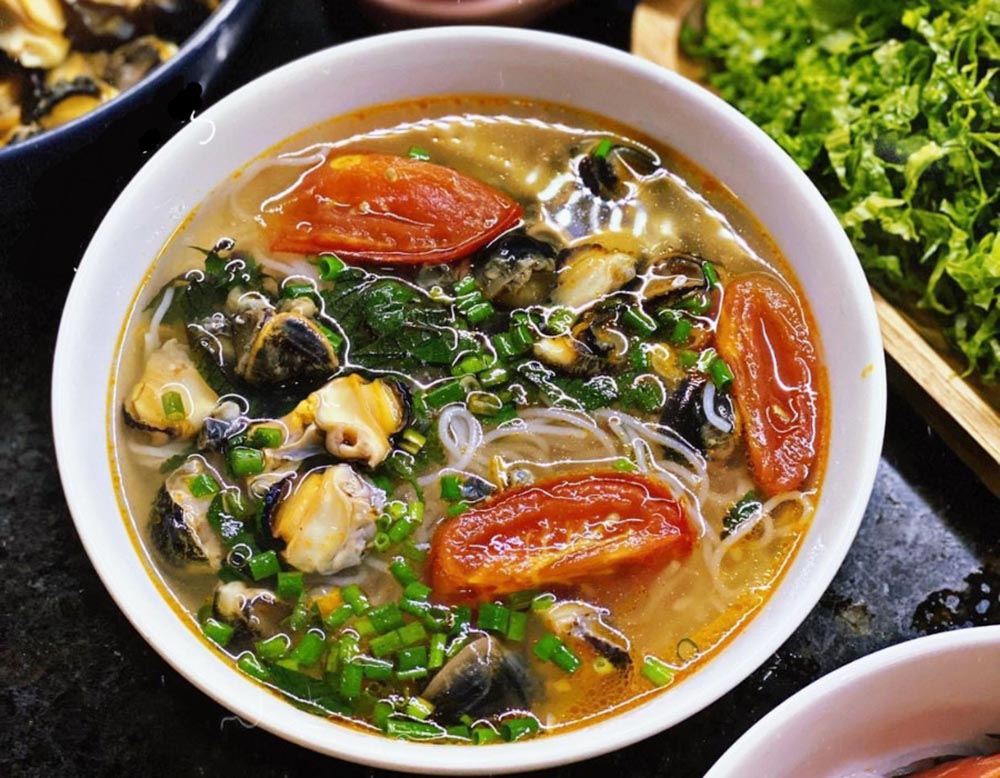
Miến Xào Lươn, or stir-fried eel noodles, showcases the fascinating use of eel in Vietnamese cuisine. This dish features glass noodles stir-fried with crispy eel, representing a unique texture that is delightful and flavorful.
The dish is often garnished with fresh herbs such as purple perilla, providing freshness that complements the rich flavors of the eel. The careful preparation and incorporation of lime juice heighten the dish’s complexity, allowing the various textures and tastes to shine.
Many places in Hanoi offer this dish, and while it’s a popular choice among those seeking adventurous dishes, it remains an emblem of Hanoi's creative culinary landscape. Whether dining at local eateries or upscale restaurants, Mì Xào Lươn captures the heart of innovative Vietnamese cooking, showcasing the flavors of the region.
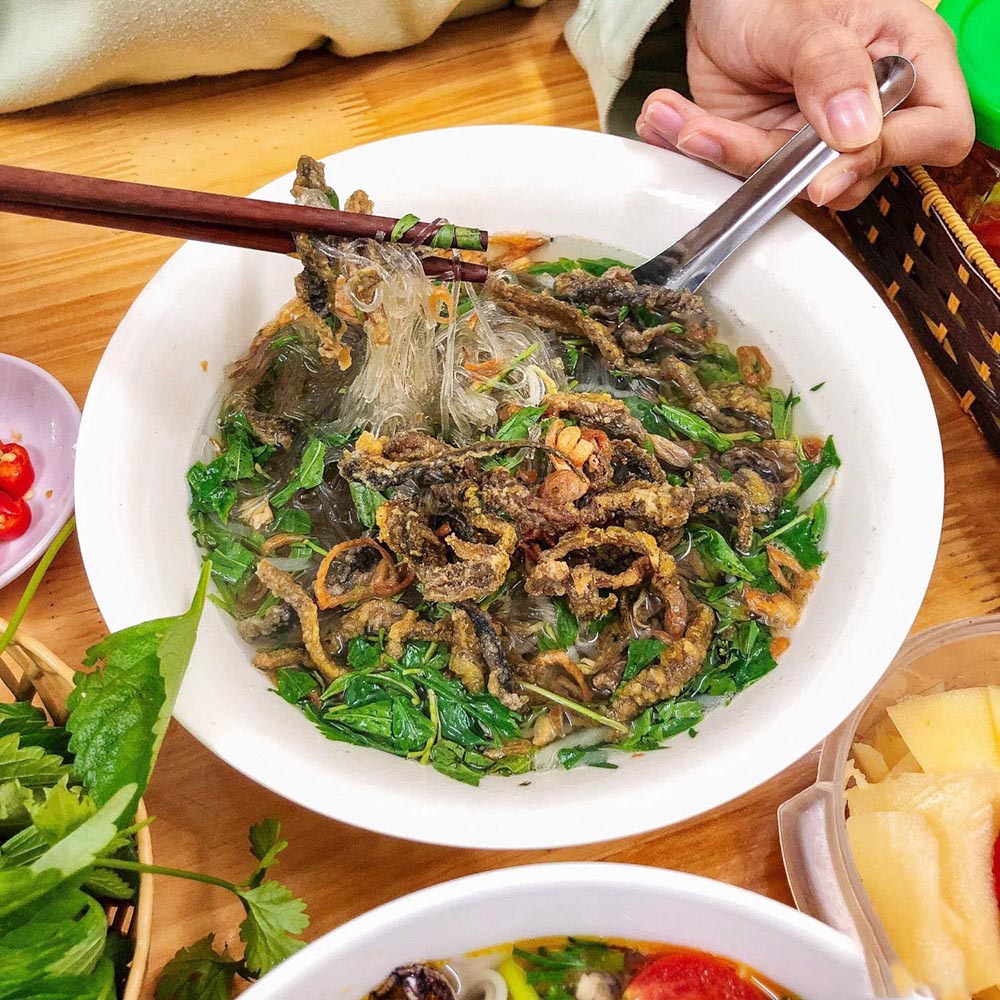
Bánh Cuốn, or steamed rice rolls, are delicately crafted and full of flavor, making them another unique addition to Hanoi's food repertoire. These rice rolls are made from a thin batter of rice flour that is carefully steamed.
Once prepared, they are typically accompanied by crispy shallots and fresh herbs, ensuring that each bite offers a delightful mix of textures and flavors. What makes Bánh Cuốn particularly special is its dipping sauce, usually a blend of fish sauce, lime, and chilies, allowing diners to customize their rolls’ flavor profiles.
Street vendors and small eateries take great pride in this dish, with local spots like Bánh Cuốn Thanh Vân offering some of the best versions around. The delicate texture and rich flavors of Bánh Cuốn embody the artistry of Vietnamese cuisine, telling a story of tradition and culinary mastery.
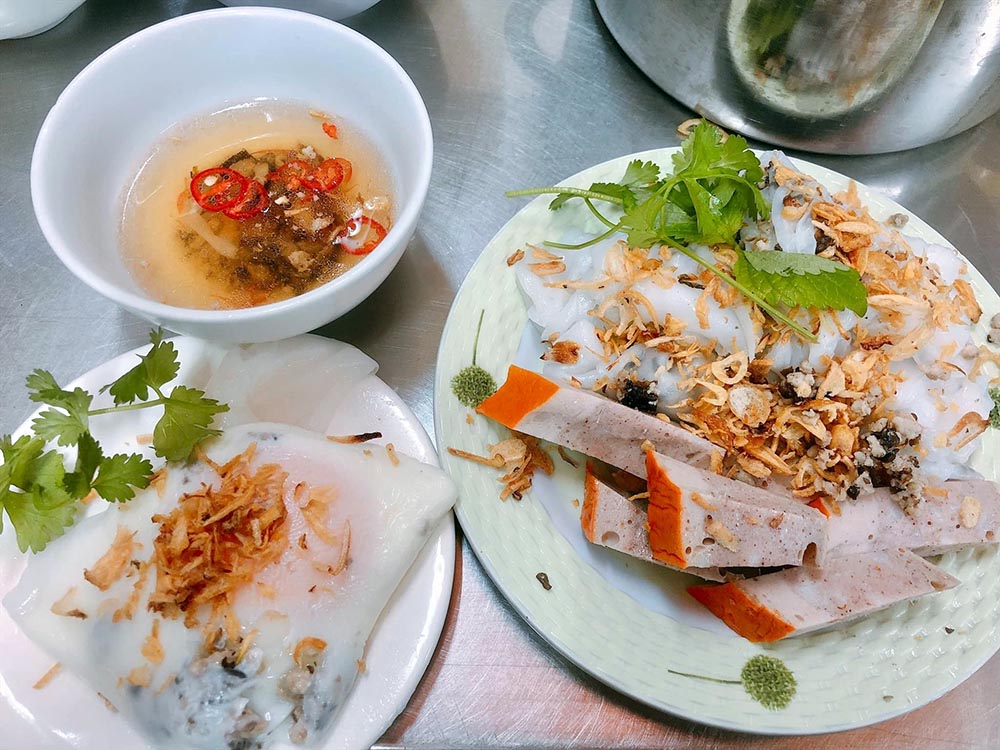
In addition to the unique dishes that define Hanoi’s culinary landscape, the city is also known for its street food staples that capture the essence of what it means to eat in the bustling streets of Vietnam. Dishes like Bánh Mì, Xôi Xéo, and Bún Cá serve as comforting meals and highlights of the street food experience. Each of these dishes offers a unique spin on flavors, making them not only popular but essential for anyone looking to immerse themselves in Hanoi's food culture.
Bánh Mì is a beloved street food staple throughout Vietnam, and in Hanoi, it's revered for its delicious fillings and crunchy baguette texture. This sandwich represents a fusion of French and Vietnamese cuisine, most evident in the use of crispy, airy baguettes that encase an assortment of savory ingredients.
Every bite of Bánh Mì is a delightful combination of crispy and soft textures, with the flavors melting together in harmony. Popular establishments like Bánh Mì 25 are often populated with hungry diners eager to grab a quick, delicious meal while exploring the city. The standout fillings, alongside a backdrop of vibrant street life, make tasting Bánh Mì an experience that encapsulates the essence of dining in Hanoi.
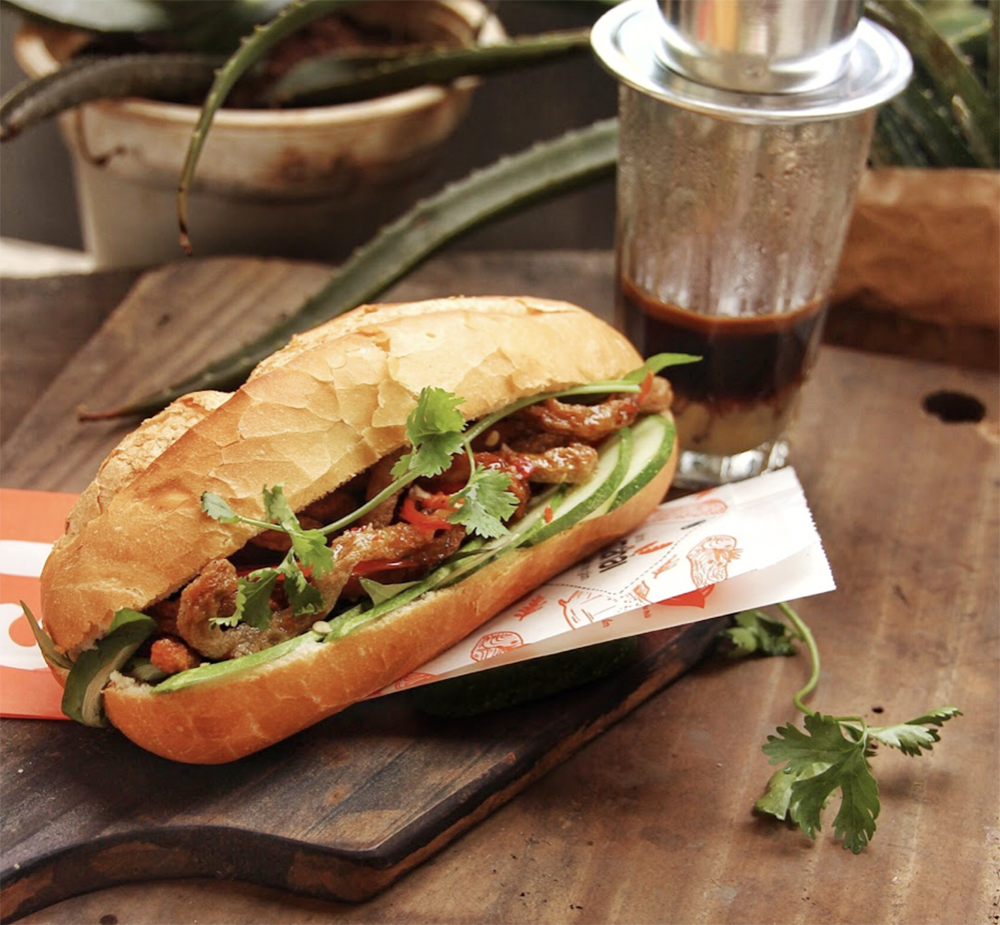
Another staple in Hanoi is Xôi Xéo, or savory sticky rice, which offers a comforting breakfast or snack option. The dish consists of sticky glutinous rice colored by turmeric, giving it a distinctive yellow hue that is visually appealing and appetizing.
Often sold from street carts wrapped in banana leaves for easy take-away, Xôi Xéo is both affordable and filling, typically priced around 15,000 VND (approximately $0.65). This versatile dish exemplifies the hearty, comforting food that embodies traditional Vietnamese breakfast culture. Eateries throughout Hanoi serve Xôi Xéo fresh and hot, and regulars often stop by for a quick, fulfilling meal, solidifying its popularity among locals.
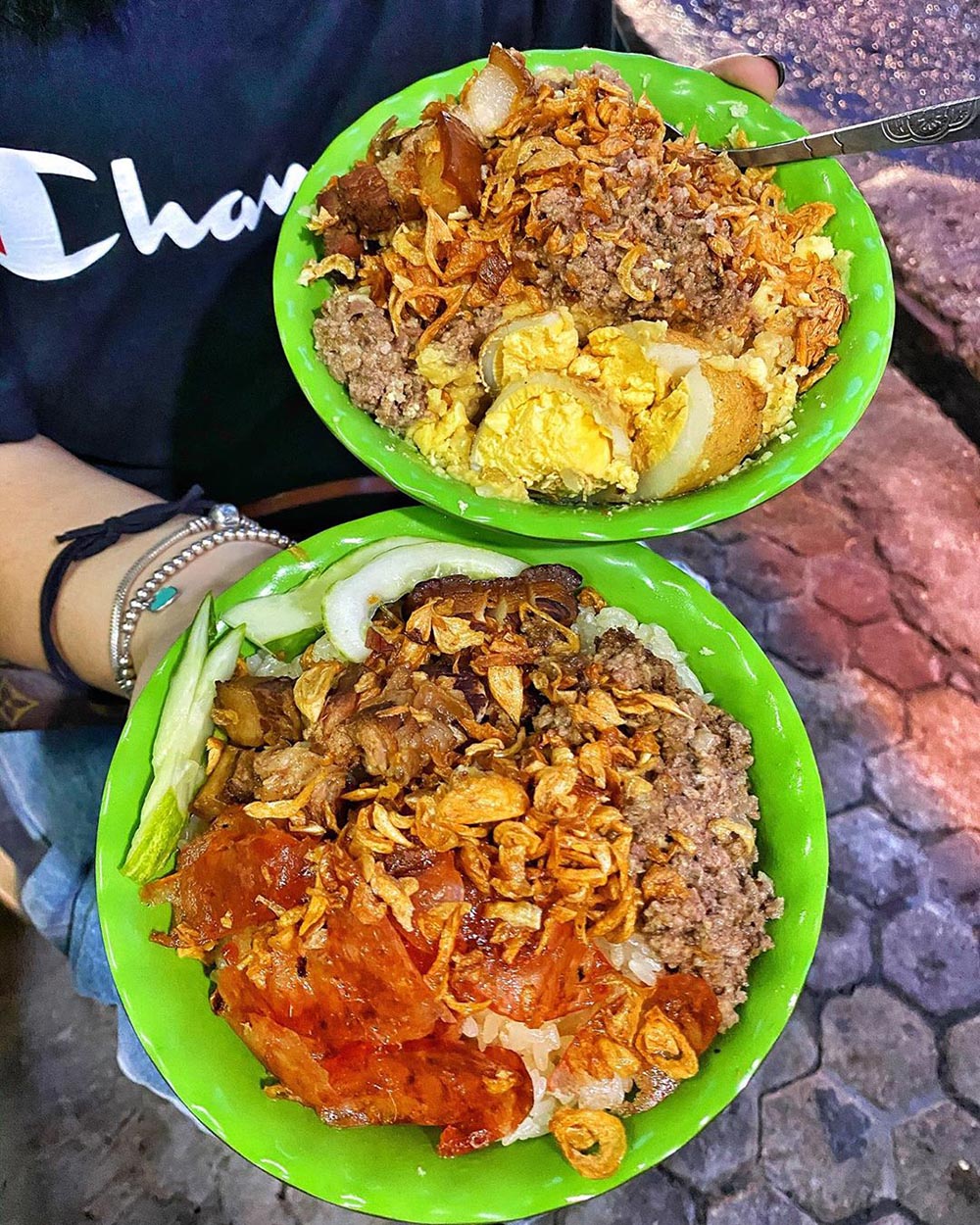
Bún Cá, or fish rice vermicelli soup, can be characterized as a delightful combination of textures and flavors, serving as another essential dish within the bustling street food scene of Hanoi. This savory soup showcases medium-thick rice vermicelli paired with deep-fried freshwater fish.
Diners can personalize their Bún Cá with fresh herbs, lime, and chili to enhance flavors according to their taste preferences. Renowned spots for this dish, such as Bún Cá Hàng Đậu and Bún Cá Vân, exemplify the diversity of street food options in Hanoi, offering a unique experience that captures the city's love for flavorsome and satisfying meals.
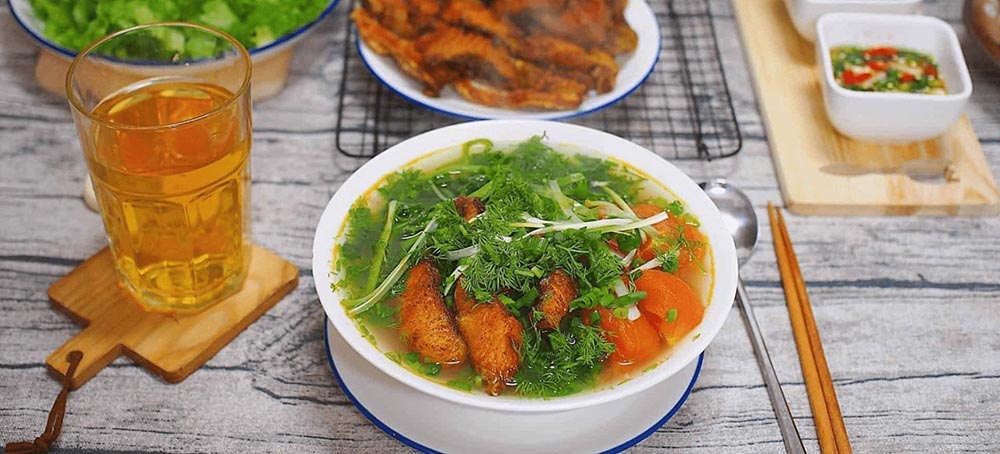
Among Hanoi's many culinary offerings, breakfast favorites play a crucial role in the daily lives of locals, providing a range of delicious options to start the day. Whether it's a steaming bowl of phở, a hearty portion of Xôi Xéo for sustenance, or comforting dishes like Bánh Cuốn, these breakfast staples embody the spirit of traditional Vietnamese morning fare. Exploring these favorites reveals the depth of flavor and texture that defines Hanoi's culinary identity and sets the tone for a delightful day ahead.
Bánh Đúc, a traditional steamed rice cake, serves as a nostalgic breakfast choice for many in Hanoi. Its soft texture and warm flavors evoke fond memories and offer a truly authentic taste of Vietnamese culture.
Bánh Đúc can be served sweet or savory, with Hanoi preferences leaning towards savory options. Common toppings include fried shallots, minced meat, and sautéed mushrooms, often accompanied by a special chili garlic fish sauce that enhances the flavor profile. Local eateries, such as Bánh Đúc Nóng Bà Nội, have become go-to spots for this delicious dish, drawing crowds eager to indulge in an authentic Vietnamese breakfast experience.
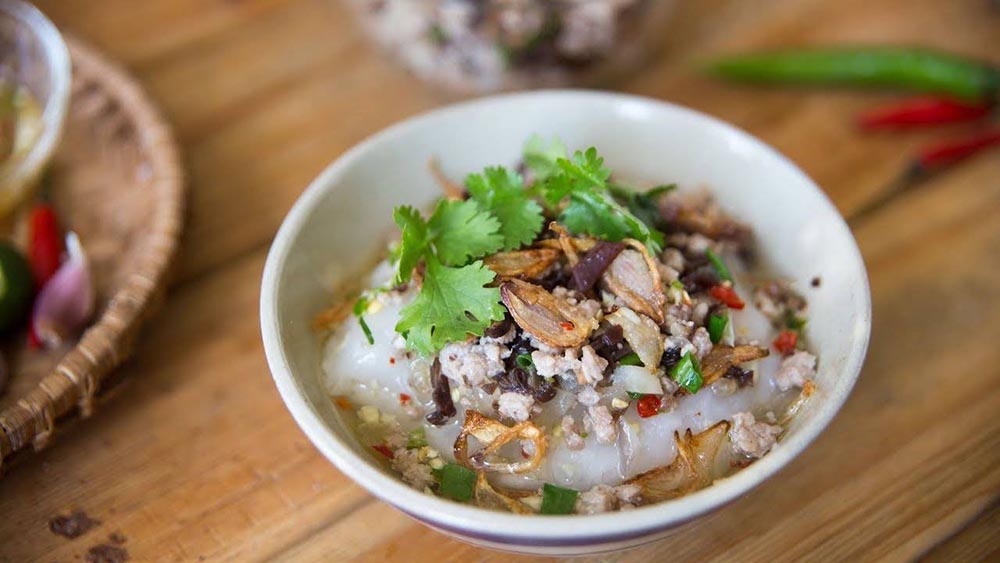
Xôi Xéo, or Vietnamese sticky rice with mung beans, is another breakfast staple in Hanoi that’s greatly cherished by locals. This versatile dish is characterized by its sticky, glutinous texture and beautiful golden color, resulting from the incorporation of turmeric during cooking.
This savory dish is not just a breakfast item; it’s enjoyed throughout the day and commonly sold from street vendors wrapped in banana leaves for convenience. The combination of flavors in Xôi Xéo brings together savory and subtle sweetness, making it a favorite for many seeking a heartwarming meal. Priced reasonably at about 15,000 VND (approximately $0.65), this dish is extremely accessible and consistently showcases the essence of Vietnamese street food culture.
Phở Xào, or stir-fried noodles, is yet another beloved breakfast dish in Hanoi that simplifies the complex interplay of flavors one craves in the morning. This dish features rice noodles stir-fried with a medley of meats and vegetables, creating an aromatic meal that is both comforting and invigorating.
As a quick and satisfying meal enjoyed by many locals during the busy morning hours, Phở Xào showcases Hanoi’s bustling street food scene. Each vendor may have their own unique take on this dish, providing a canvas for diners to choose their meats and vegetables, ultimately engaging with the vibrant food culture that defines the city.
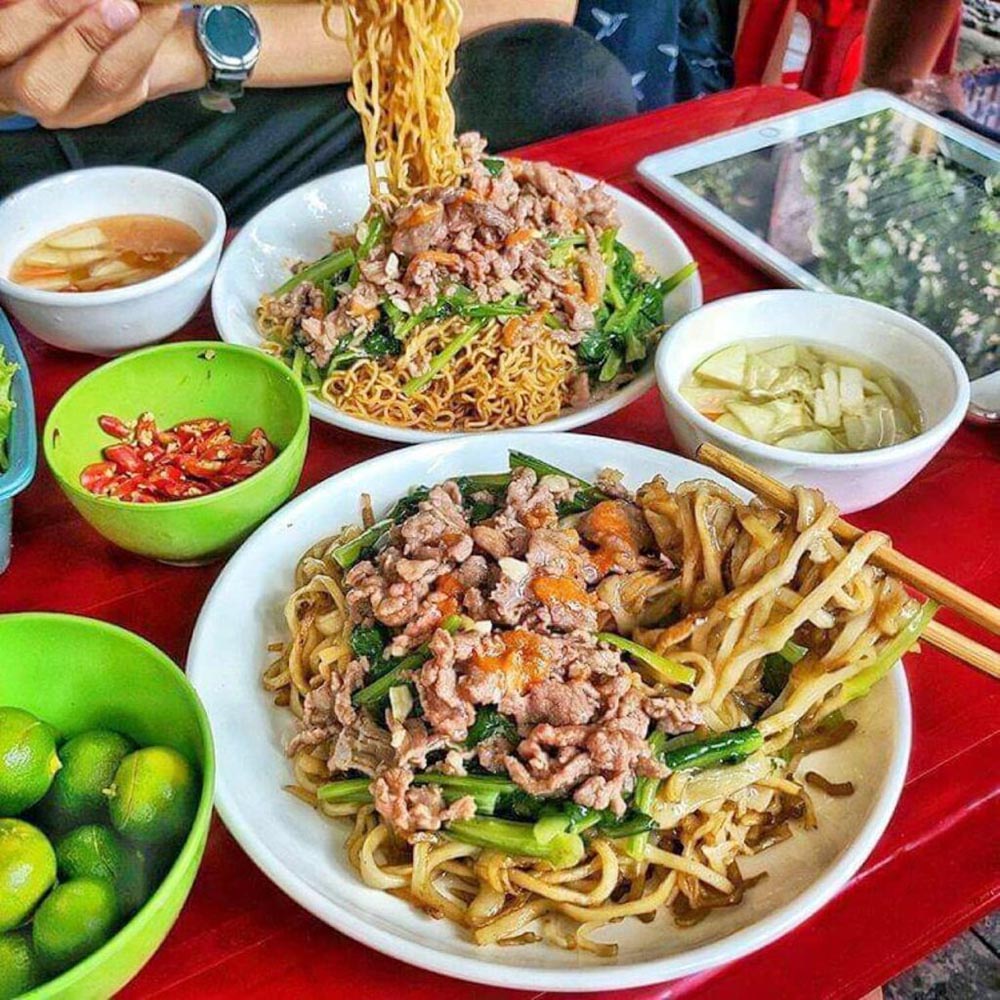
Hanoi's culinary landscape offers an enticing range of popular snacks and side dishes that enhance mealtime experiences. Many local favorites, such as Bánh Gối, a crispy pillow cake, Bánh Tôm, shrimp cakes, and Chả Giò, spring rolls serve to complement main dishes or stand alone as delightful snacks. Each of these dishes reflects the creativity and heart behind Vietnamese cooking, further highlighting the depth of flavors available in the vibrant streets of Hanoi.
One of Vietnam's treasured snacks is Bánh Gối, also known as crispy pillow cake. This delightful treat features a crispy exterior, shaped like a pillow, filled with a savory mixture of minced pork, mushrooms, and vermicelli.
The contrast between the crunchy shell and the tender, flavorful filling makes Bánh Gối irresistible. Often served with a side of fish sauce or spicy dipping sauce, this dish is perfect for snacking or as an appetizer, making it a popular option for those exploring the city during the vibrant evening hours. Local vendors near Hanoi Train Street are known for their delicious Bánh Gối, illustrating the essence of Vietnamese snacking culture.
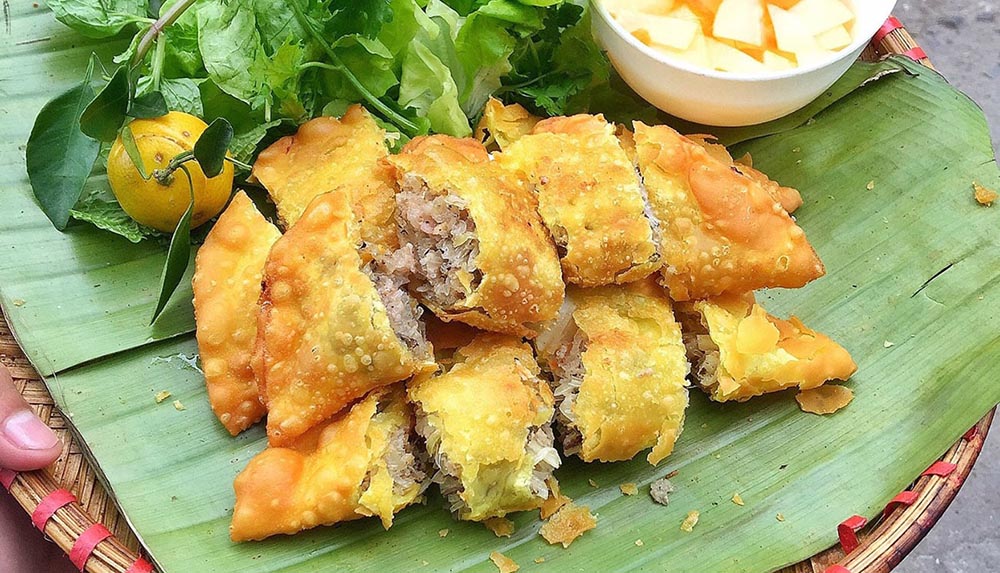
Bánh Tôm, or shrimp cakes, represent a quintessential snack in Hanoi, known for their deliciously crispy batter made from sweet potatoes and shrimp. This dish exemplifies the magical combination of textures that is found across Vietnamese cuisine.
Typically served with a refreshing dipping sauce, Bánh Tôm also comes with fresh herbs like lettuce and mint for wrapping, adding a refreshing element to the fried delight. These cakes are a favorite among locals and tourists, particularly enjoyed for evening snacking or as a flavorful appetizer. Popular spots for Bánh Tôm can be found in various food stalls and local eateries, maintaining a firm hold in Hanoi’s diverse food culture.
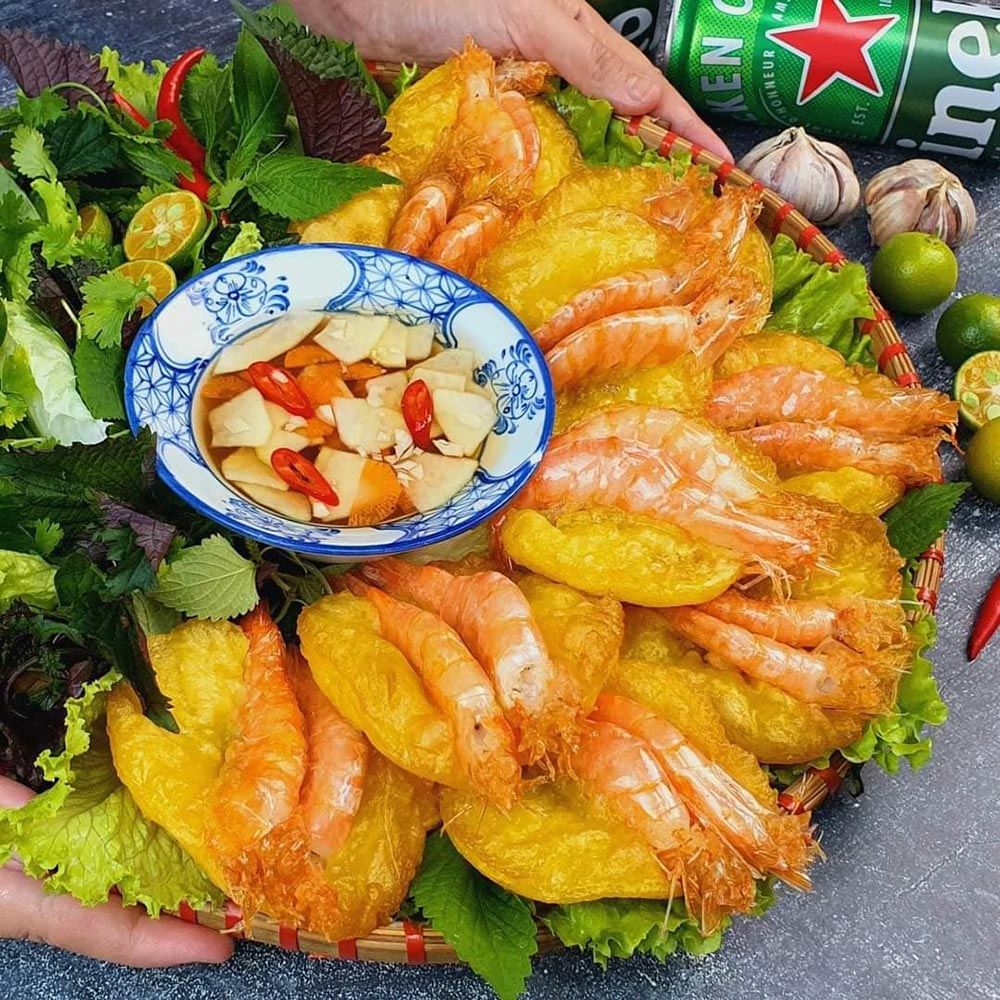
Often hailed as one of Vietnam's most beloved snacks, Chả Giò, or Vietnamese spring rolls, offer a delightful experience with each bite. These crispy rolls are heavily filled with ground pork, shrimp, vegetables, and glass noodles, all wrapped expertly in rice paper before being deep-fried until golden.
Chả Giò is served hot, accompanied by a sweet and sour dipping sauce that highlights the savory elements within each roll. With a signature crunch upon first bite, these spring rolls are often featured at family gatherings or street-side food stalls, exemplifying the rich culinary tradition that Vietnamese cuisine is celebrated for. Local eateries throughout Hanoi typically serve Chả Giò as part of an extended culinary menu, showcasing the artistry and flavor profiles synonymous with the city’s food culture.
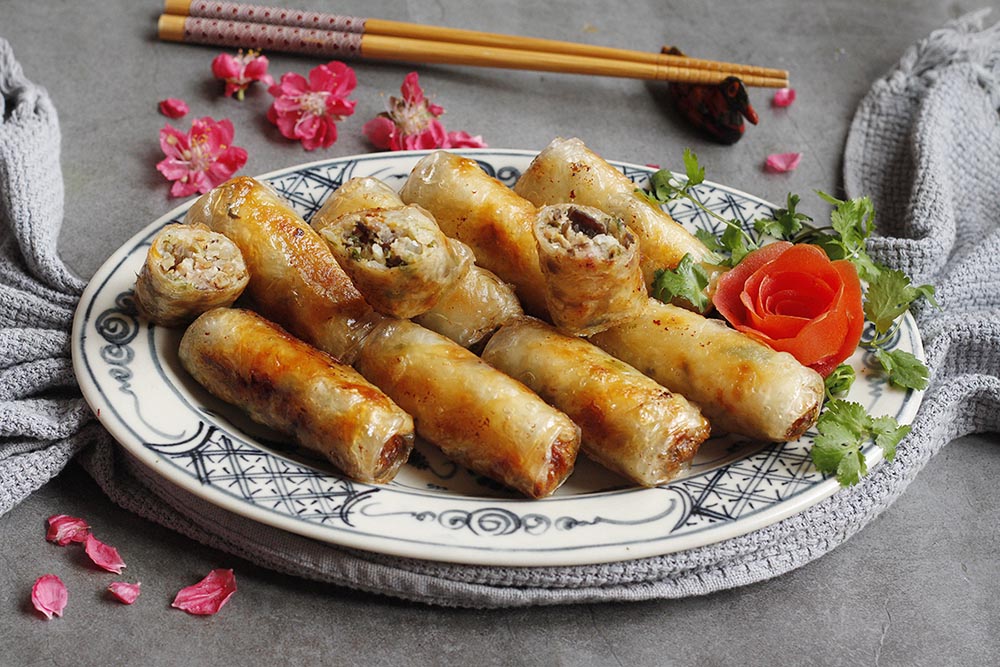
Hanoi's food scene wouldn't be complete without its array of drinks and desserts, which offer refreshing and delightful complements to the array of savory dishes available. Traditional favorites like Cà Phê Trứng (egg coffee), various forms of Chè (Vietnamese dessert soup), and fruity Sinh Tố (fruit smoothies) complete the dining experience and illustrate Hanoi's unique beverage culture. These drinks not only serve as a palate cleanser but also enrich the overall dining experience by tying in the sweet aspects of Vietnamese cuisine.
Cà Phê Trứng, or egg coffee, exemplifies Hanoi’s innovative spirit in crafting unique beverages. This beverage combines strong Vietnamese coffee with whipped egg yolk, sugar, and sweetened condensed milk, resulting in a creamy and rich drink that has garnered international attention.
The drink resembles a rich dessert more than a traditional cup of coffee, pairing perfectly with the deep flavors of savory dishes while delivering a delectable sweetness. Found in cafés across Hanoi, Cà Phê Trứng adds to the city's vibrant coffee culture and provides a delightful angle on the drinking experience.
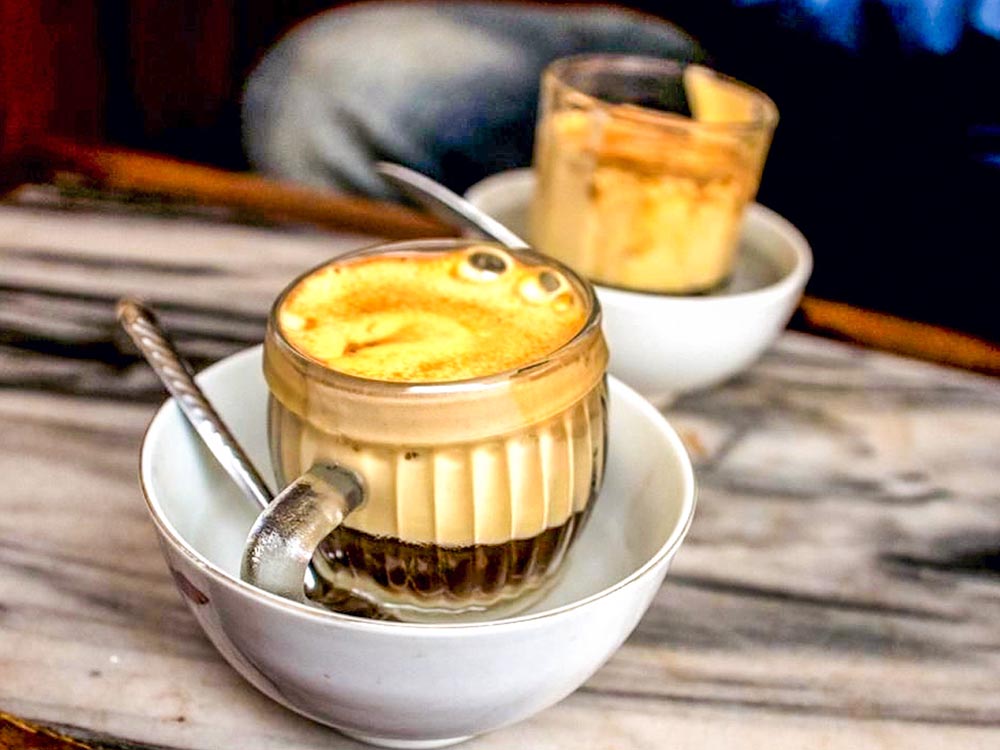
Chè is an essential component of Vietnamese cuisine, celebrated for its versatility and myriad flavors. This sweet treat is prepared as a dessert soup, made with a variety of ingredients such as mung beans, fruits, jellies, and coconut milk.
Whether served hot or cold, Chè is often enjoyed any time during the day, catering to a range of tastes and preferences. Vendors throughout Hanoi offer various styles of Chè, making it accessible to both locals and tourists seeking a refreshing end to their meal. This sweet soup encapsulates the warmth and hospitality that can be found in Vietnamese culture, providing a comforting closure to the dining experience.
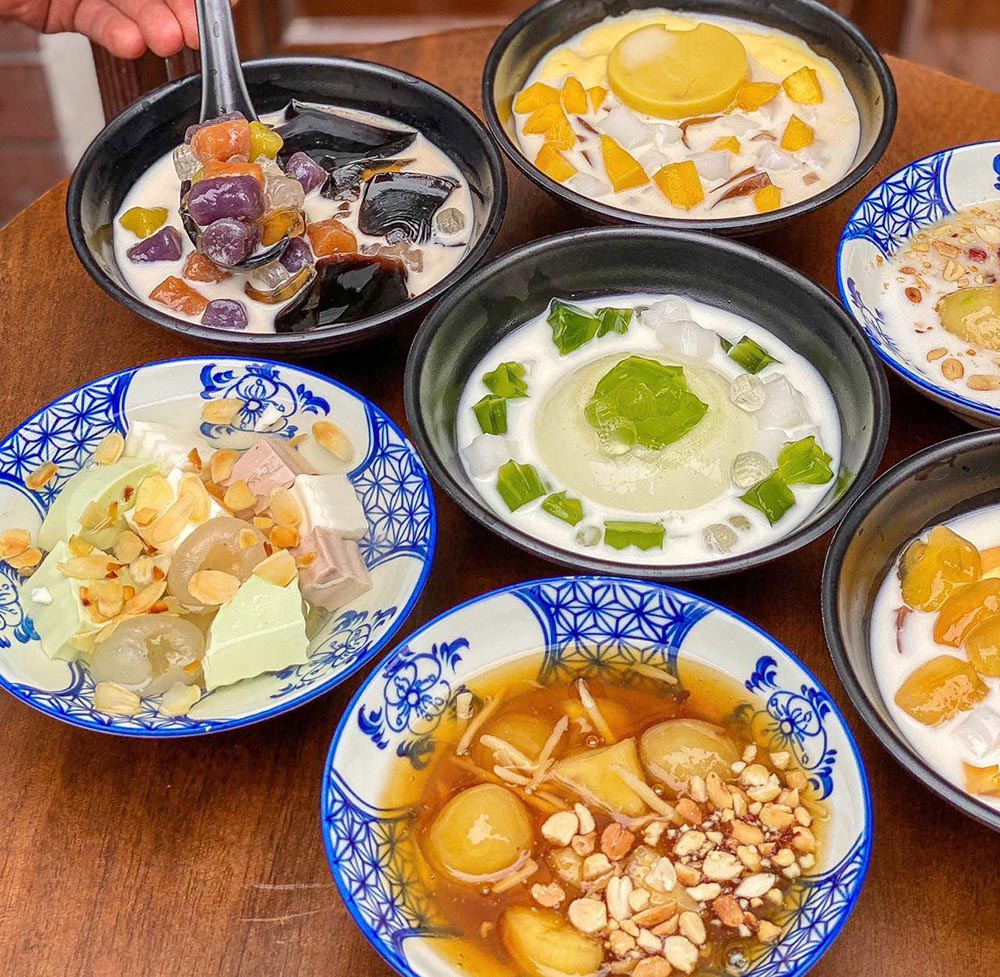
Refreshing and nutritious, Sinh Tố, or Vietnamese fruit smoothies, provide the perfect way to cool off in Hanoi’s warm climate while enjoying a burst of fruity flavor. Crafted from an array of tropical fruits, these smoothies are often enriched with sugar and coconut milk for a creamy consistency.
These smoothies are not only a delicious snack, but they also complement savory dishes beautifully, creating a well-balanced dining experience. Street vendors throughout Hanoi specialize in crafting these refreshing drinks, making it easy to enjoy a quick and satisfying pick-me-up while exploring the city's vibrant streets.
What are the best places to try Phở in Hanoi?
What is Xôi Xéo, and how is it typically served?
Is Chả Cá suitable for those who don’t eat fish?
Where can I find the famous Bánh Mì in Hanoi?
What types of Chè are available in Hanoi?
Exploring the local dishes of Hanoi offers a delightful journey through the heart of Vietnamese culture and culinary artistry. From iconic dishes like Phở and Bún Chả to unique offerings such as Bún Ốc and Chả Cá, each meal tells a story reflective of the city’s rich history and vibrant food scene. Furthermore, the diverse array of snacks and side dishes, along with refreshing drinks and desserts, illustrates the depth of flavor found throughout Hanoi's bustling streets. Enjoying these dishes is not just about the taste but also about connecting with the local community, experiencing their traditions, and understanding their culinary heritage. Whether you are savoring a bowl of steaming Phở or indulging in a crispy Bánh Gối, each bite is an invitation to appreciate the intricate tapestry of flavors that defines Hanoi’s local cuisine.